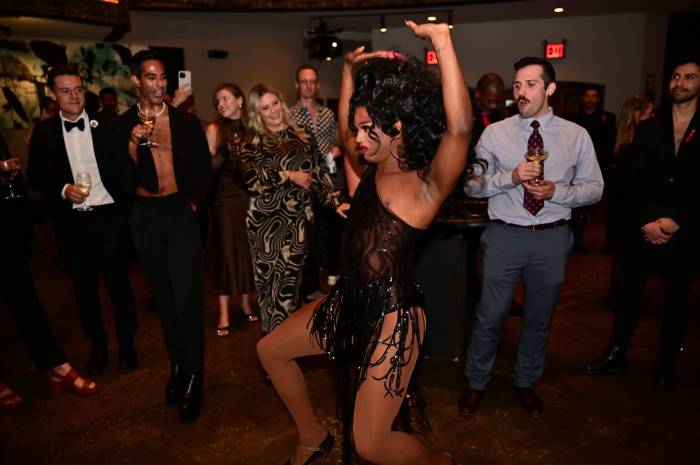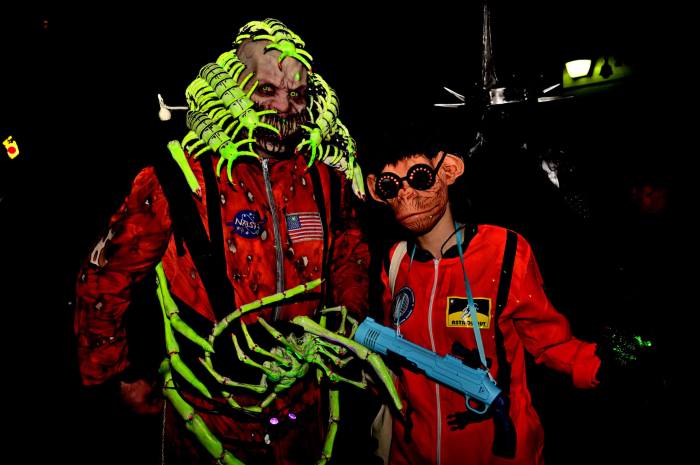Bring a sweater or a light jacket — but leave the cash behind. This October, you’ll find four ambitious, provocative (and free) events on, and around, the High Line.
HIGH LINE OPEN STUDIOS
High Line Open Studios was created in 2007 to raise awareness of the many studios scattered among Chelsea’s multitude of galleries. Since then, the annual event has continued to expand — just as the High Line has. What once took place in a single building on 26th Street now spans the entire length of the High Line (from 14th to 30th Street). To map out your own self-guided tour of West Chelsea’s studios, visit highlineopenstudios.org. This rare opportunity to enjoy art at its origin allows you to see first hand the creative spaces generally only open by appointment (and be among the first to discover new talent before it makes its way to gallery walls around town, and around the world). You’ll also have the chance to purchase works directly from the artists’ studio inventory.
Fri., Oct. 14 through Sun., Oct. 16, 12-6pm. The free self-guided tour begins at the West Chelsea Arts Building (508-526 W. 26th St., btw. 10th & 11th Aves.). For more info, visit highlineopenstudios.org.
SEEWATCHLOOK
The world premiere of multimedia Brazilian artist Michel Melamed’s play — “SEEWATCHLOOK” — also marks the entry of a new verb into the universal language of pop culture. This series of short poetic and comic scenes has been designed specifically for visitors to the High Line (by way of uniquely repurposing that already interactive public space). Melamed directs a cast of 12, who present slices of everyday life meant to blur the line between citizens and actors — while challenging our notion of what it means to live in a city that often functions as one giant stage. By the end, Melamed hopes you’ll have a good answer to the question: “What do you see when you look at what you watch?” Further expanding the notion that we’re all players in one giant drama, Melamed is filming a documentary for the Brazilian cable TV channel “Canal Brazil” about the challenges of developing a new show in New York City. Don’t be surprised if you become part of the performance by the simple act of showing up.
Free. Oct. 6-16. Performances at 8pm on Thurs. and Fri. — and at 6pm on Sat. and Sun. On the High Line’s 10th Ave. Square viewing stands (10th Ave. and 17th St.; entrance at 16th St.). Running time, 65 minutes. Performances will not occur if it is raining. For more info, visit michelmelamed.com.
REMOTE NATION
Sometimes you just want to keep watching TV. Good thing for you, then, that artist Kevin Cooley’s installation “Remote Nation” has been extended though October 29. This “television-based large scale public art project” creates the illusion that imaginary residents of a building are all at home watching the same program. Don’t believe it, though: Those 100 old-fashioned analog TVs flickering in unison are, in fact, being controlled by Cooley’s father from the comfort of his home in Colorado. The artist was inspired to create “Remote Nation” after observing his parents watching the same programs, but in separate parts of the house. Cooley (the son, not the father) says he intends the piece to “open a dialogue about how technology simultaneously expands our connection to the world at large and lulls us into a state of entranced isolation, cutting us off from the people immediately around us.”
On view from the High Line Park (btw. W. 24th and 25th Sts.) and at street level (on W. 24th and 25th Sts., just west of 10th Ave.), every evening after dark, through Oct. 29. For more info, visit remotenation.tv.
ALIVE-NESSES: PROPOSAL FOR ADAPTATION
High Line Art (as presented by Friends of the High Line) begins its Fall 2011 public art season with Charles Mary Kubricht’s “Alive-nesses: Proposal for Adaptation.” Painted on park storage containers, the installation brings art to an area of the High Line that’s still closed to the public (and overgrown with wildflowers and grasses). By painting black and white patterns on the park’s storage containers, “Alive-ness” alters our view of those large structures. The idea was inspired by “dazzle” — a type of protective design and coloration on animals that was developed into military camouflage by the British in World War I to confuse the enemy by disguising ships. By applying dazzle to High Line storage containers, Kubricht invites viewers “to move and change directions, altering familiar visual information and questioning the objects shape and form, as well as the viewer’s field of vision.” If you get lost or disoriented in the process, just blame the British.
At the High Line, at the Rail Yards (btw. W. 30th and W. 34th Sts.). The installation is on view from the northern end of the park (near W. 30th St.).


































